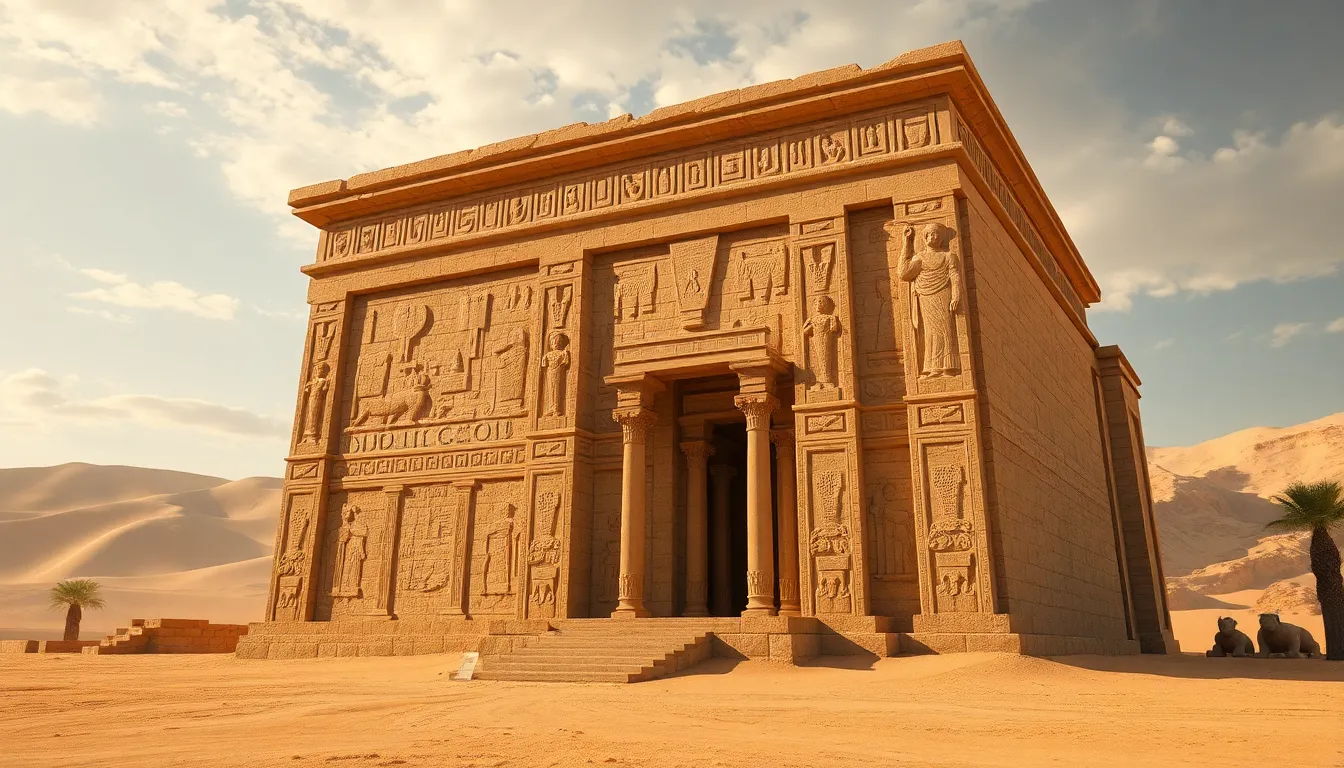The Temple of Set: The God of the Desert
I. Introduction
Set, one of the most complex deities in Egyptian mythology, represents the chaotic forces of nature and embodies the harsh realities of the desert. Known as the god of the desert, storms, and disorder, Set holds a significant place in the pantheon of ancient Egyptian gods. The desert, often viewed as a place of danger and uncertainty, serves as a powerful symbol in Set’s mythology. This article aims to explore the historical context, symbolism, architectural features, rituals associated with the Temple of Set, and his enduring legacy in both ancient and modern culture.
II. Historical Context
The origins of Set can be traced back to the early dynastic periods of ancient Egypt, where he was initially revered as a protector of the pharaohs and a deity of strength. Over time, however, his image evolved, particularly after his conflict with Osiris, the god of the afterlife. This change led to Set being associated more with chaos and evil, contrasting sharply with the harmony represented by Osiris and Horus.
- Origins of Set: The earliest references to Set appear in the Pyramid Texts, where he is depicted as a powerful force capable of protecting the sun god Ra during his nightly journey.
- Evolution of Worship: Set’s worship shifted significantly during the Middle Kingdom and the New Kingdom, where he was often invoked in military contexts.
- Key Events: The myth of Set’s murder of Osiris and the subsequent battle with Horus significantly shaped Set’s narrative and the perception of his character.
III. The Symbolism of Set
Set’s symbolism is multifaceted, representing both chaos and a necessary balance within the world. His association with the desert landscape adds layers to his character, illustrating the duality of creation and destruction.
- Chaos and Disorder: Set is often depicted as a force of chaos, challenging order and stability, which is essential for the balance of the universe.
- Connection to the Desert: The desert represents both a physical and metaphorical barrier. It is a harsh environment that reflects Set’s tumultuous nature, embodying danger and unpredictability.
- Protector and Destroyer: Despite his chaotic nature, Set is also seen as a protector of the pharaohs and a guardian against the forces of chaos, making him a paradoxical figure in mythology.
IV. The Temple of Set: Architectural Features
The Temple of Set, dedicated to this complex deity, showcases remarkable architectural features that reflect the grandeur of ancient Egyptian construction techniques.
- Design and Layout: The temple is typically designed with a large courtyard, surrounded by walls adorned with reliefs depicting Set’s various aspects. The sanctum, where the cult statue of Set resides, is often located at the heart of the temple.
- Materials and Techniques: Constructed primarily from sandstone and limestone, the temple features intricate carvings and hieroglyphics that narrate the stories and myths associated with Set.
- Importance of Location: Strategically located in the desert, the temple was a place of refuge and worship, symbolizing the connection between Set and the harsh desert landscape.
V. Rituals and Worship Practices
The worship of Set involved various rituals and ceremonies that sought to appease the god and gain his favor. These practices were integral to maintaining the balance between chaos and order.
- Ceremonies: Major festivals, often held during the inundation season, included offerings of food, drink, and incense, accompanied by music and dance to honor Set.
- Offerings and Sacrifices: Animals, particularly red-haired animals, were often sacrificed to Set, as red was associated with chaos and destruction.
- Role of Priests: Priests and priestesses played a vital role in the rituals, conducting ceremonies and interpreting the will of Set, ensuring that the community remained in favor with the deity.
VI. The Influence of Set in Popular Culture
Set’s influence extends beyond ancient Egypt, resonating in modern literature, film, and spirituality, illustrating the timeless nature of his character.
- Depictions in Literature and Film: Set has appeared in various works, from ancient texts to contemporary movies, often portrayed as a villainous figure or a tragic anti-hero.
- Modern Interpretations: Modern interpretations often explore themes of duality in Set’s character, reflecting contemporary struggles with chaos and order.
- Resurgence of Interest: There has been a revival in interest in Set-related practices, particularly in spiritual circles that embrace the complexities of his nature.
VII. The Legacy of the Temple of Set
The historical significance of the Temple of Set is profound, offering insights into ancient Egyptian spirituality and culture. Archaeological findings continue to shed light on his worship and the social dynamics of the time.
- Archaeological Findings: Excavations have uncovered numerous artifacts, inscriptions, and offerings that illustrate the rituals and beliefs surrounding Set.
- Contemporary Relevance: Set remains significant in modern spiritual practices, with many individuals drawing inspiration from his complex character.
- Impact on Desert Cultures: The themes associated with Set continue to influence desert cultures, where the balance of chaos and order is a prevalent aspect of life.
VIII. Conclusion
In summary, the Temple of Set stands as a testament to the intricate mythology surrounding one of Egypt’s most enigmatic deities. From his origins as a protector to his association with chaos and disorder, Set’s legacy endures through time. His influence can be seen in both ancient practices and modern interpretations, inviting further exploration of Egyptian mythology and its rich tapestry of gods and goddesses.
As we reflect on the enduring legacy of Set, we are reminded of the complexities of life and the balance required to navigate the chaos of existence. We invite readers to delve deeper into the fascinating world of Egyptian mythology and uncover the stories that shaped an ancient civilization.




